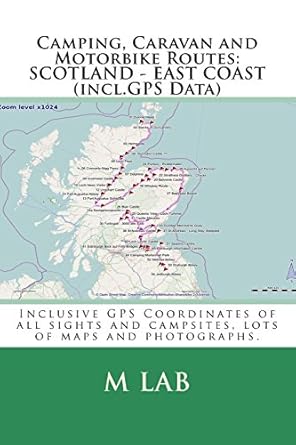Navigating the world with GPS technology has become second nature for many of us. But while we effortlessly follow the blue line on our screens, do we truly understand the underlying technology driving our journeys? This article dives deep into the core concepts of waypoints and routes, explaining their differences and how they work together to guide us from point A to point B (and sometimes, far beyond).
Understanding Waypoints: The Building Blocks of Navigation

Think of waypoints as the individual bricks that build your navigational wall. Each waypoint is a specific geographic location, typically defined by its latitude and longitude coordinates. These coordinates pinpoint a place on the Earth’s surface, marking a significant point in your journey. It could be as simple as a gas station, a scenic overlook, a friend’s house, or a specific location for a hike.
You can add waypoints manually, inputting their coordinates directly, or you can let your GPS device determine waypoints automatically based on your route. Many modern GPS devices allow you to name your waypoints, adding a descriptive label that helps you remember their purpose. For example, you might label a waypoint “Lunch Stop” or “Grand Canyon Viewpoint.” This makes navigating complex journeys much easier and more intuitive.
Waypoints are incredibly versatile. They aren’t just for following a planned route; they’re crucial for various navigation tasks:
- Creating Custom Routes: Connecting multiple waypoints creates a customized route that perfectly suits your needs.
- Marking Points of Interest: Save significant locations for future reference.
- Tracking Progress: Observe your progress against a series of waypoints.
- Emergency Navigation: Quickly mark a location in case of an emergency.
Routes: The Path Connecting the Points

While waypoints are the individual points, routes are the lines connecting them. A route is a planned path, a sequence of waypoints, that your GPS device uses to guide you from your starting point to your destination. The route isn’t just a straight line; it considers various factors such as roads, terrain, traffic conditions, and user preferences (like avoiding highways or tolls) to provide the most efficient or desirable path.
Many GPS devices and navigation apps automatically calculate routes based on your chosen starting point and destination. You simply input the addresses or locations, and the system generates an optimal route, usually displaying it as a visual line on a map. However, this automated route generation can sometimes be tweaked. Most systems allow you to adjust routes, perhaps avoiding a particular area or adding extra waypoints along the way.
The intelligence behind route calculation is complex. It involves sophisticated algorithms that analyze vast databases of road networks, traffic data, and other relevant information to determine the best course of action. Some systems even offer multiple route options, allowing you to compare different travel times or distances.
The Interplay Between Waypoints and Routes

Waypoints and routes are inherently linked. Waypoints are the raw data, the fundamental building blocks. Routes are the structured plan, the optimized path created by connecting these waypoints. You can think of it like building with LEGOs; the individual bricks are like waypoints, and the final structure is the route.
Without waypoints, you have no route. Without a route, waypoints exist in isolation, lacking context or purpose. Their collaboration is essential for effective navigation, providing flexibility and precision in guiding users to their destination. You can have a route without manually added waypoints (the system automatically generates them), but having the ability to add and adjust waypoints empowers you to fine-tune your journey, taking control of your navigation experience.
Practical Applications and Advanced Features

The uses of waypoints and routes extend beyond simple point-to-point navigation. Consider these examples:
- Geocaching: Waypoints are essential for finding hidden treasures in this popular outdoor activity.
- Hiking and Outdoor Recreation: Creating a route with waypoints helps keep you on track, especially in challenging terrain.
- Fleet Management: Businesses use waypoints and routes to optimize delivery routes and track their vehicles.
- Emergency Services: Precise waypoints are critical for emergency responders to locate incidents quickly and efficiently.
Modern GPS devices and mapping apps frequently offer advanced features that leverage waypoints and routes:
- Traffic Avoidance: Routes dynamically adjust to avoid traffic congestion, saving time and fuel.
- Offline Maps: Downloading maps with key waypoints enables navigation even without cellular data.
- Route Sharing: Sharing your planned route with others enhances safety and collaboration.
- Real-time Tracking: Sharing your location with others using waypoints provides peace of mind.
Understanding the difference between waypoints and routes is fundamental to mastering GPS navigation. Waypoints, the individual location markers, are the building blocks, while routes, the planned paths, provide the overall navigational strategy. Their combined use offers unprecedented control and flexibility, empowering users to navigate the world with confidence and precision. Whether you’re planning a cross-country road trip, a short hike, or simply navigating your city, a solid grasp of waypoints and routes will greatly enhance your navigational capabilities.